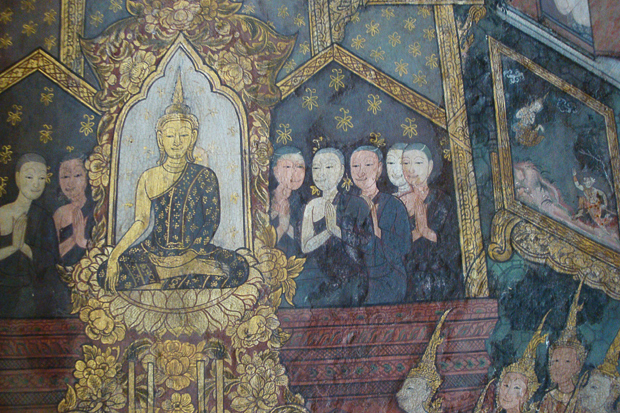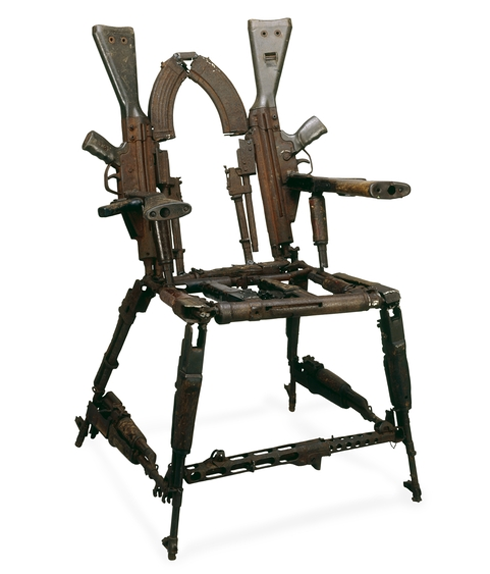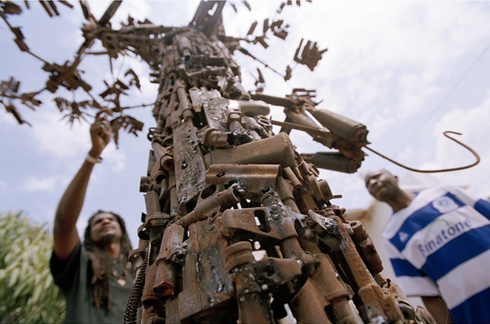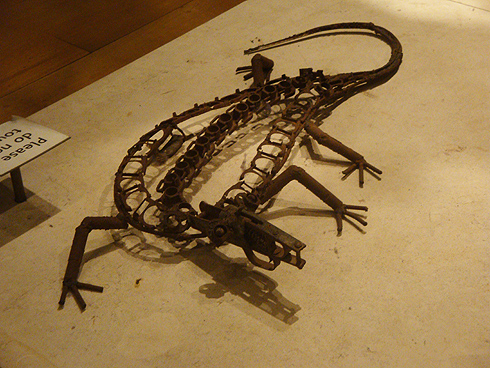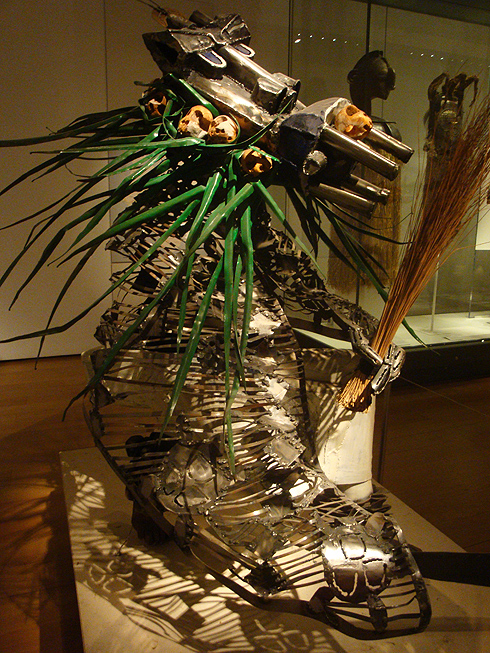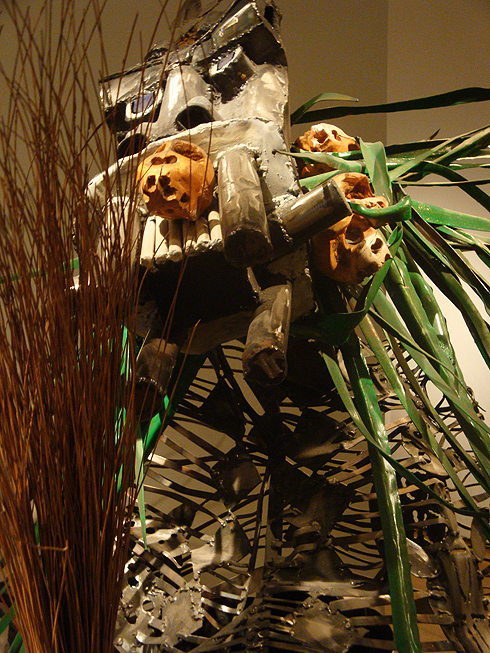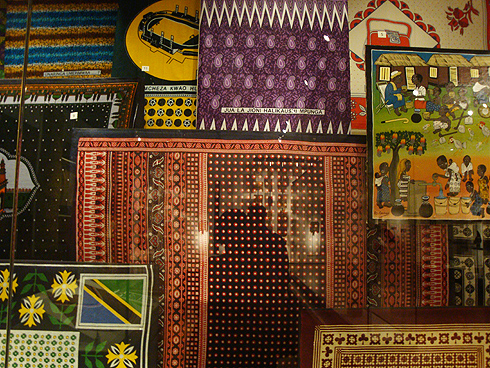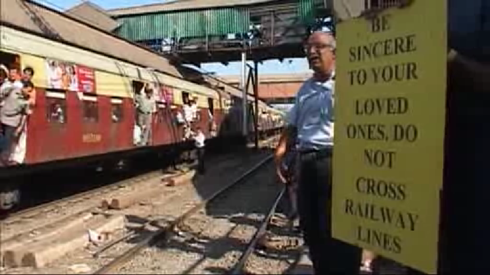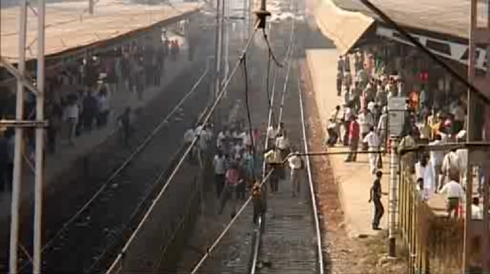The Clock
Almost calming, at times ironic and humorous this 24 hour video work pulls you in and makes you just sit and watch for a while. I managed to watch it for 30 mins the first time and 2 hrs the second time. Almost addictive and hypnotic it's amazing how accurate the film is and lovely to spot familiar scenes from favorite movies or old classics I was forced to watch in art school.
While first entering this work by Christian Marclay, I was a bit sceptical due to the expensive MoMA entry fee of $18 and then the huge 45 minute queue to watch the video. Eventually I got in and it was worth the effort. Almost calming, at times ironic and humorous this 24 hour video work pulls you in and makes you just sit and watch for a while. I managed to watch it for 30 mins the first time and 2 hrs the second time. Almost addictive and hypnotic it's amazing how accurate the film is and lovely to spot familiar scenes from favorite movies or old classics I was forced to watch in art school.
A must-watch for anyone interested in the video art side of things. Ever since I accepted the fact that I cannot enjoy art at a purely intellectual level it is much easier for me to spot things that I like versus things I don't like. It's almost crude to divide art into these groups but it is true. You either feel something when you look at a work or you just don't feel it. You can still enjoy the techniques/concept/history/context/etc. that the artist uses but eventually it doesn't matter. If you really want to become an art lover, then be honest and admit that the giant 100 yr old oil painting of a naked woman is pretty cool but doesn't do anything for you.
The Clock 2010 by Christian Marclay. Single-channel video with stereo sound. Twenty-four hours. Image Source.
Reclining Buddha Murals
These are photographs of the detailed murals that decorate the walls and windows of the Reclining Buddha temple. It exists in a much larger temple complex called the Wat Pho, which contains several hundred images of Buddha, many stupas, a huge Bodhi tree, stone statues and smaller temples.
These are photographs of the detailed murals that decorate the walls and windows of the Reclining Buddha temple. It exists in a much larger temple complex called the Wat Pho, which contains several hundred images of Buddha, many stupas, a huge Bodhi tree, stone statues and smaller temples. The scenes narrate the story of Buddha, and remind me of the vast murals in the Ajanta caves which are much older.
From the photos you notice that some parts of these murals look newer than others. I can only guess that these parts have been restored and touched up recently.
Museum Visit
A trip to London ended up at the British museum. Most of the work I found inspiring were from the Africa rooms:
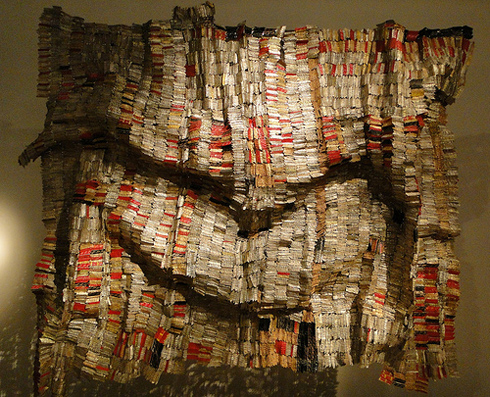
Man's Cloth. Recycled metal foil bottle-neck wrappers, copper wire. By El Anatsui, Ghana, 1998-2001. Image 1 Source. Detail photograph taken at the British Museum April 2011.
Throne of weapons, by Kester, Maputo, Mozambique, 2001. Made of decommissioned weapons from the Mozambican civil war in 1992. Exhibited at Room 25 Africa at the British Museum (April 2011).
Tree of Life Made by Kester, Hilario Nhatugueja, Fiel dos Santos and Adelino Serafim Maté. Maputo, Mozambique, 2004. Photo © 2005 Christian Aid / David Rose.
Part of the sculpture Tree of Life Made by Kester, Hilario Nhatugueja, Fiel dos Santos and Adelino Serafim Maté. Maputo, Mozambique, 2004. Photo by Aditi Kulkarni at the British Museum Room 25: Africa.
Otobo (Hippo) masquerade, made by Sokari Douglas Camp, 1995. Steel, paint, wood and palm stem brooms. British Museum April 2011. More details.
Glazed stoneware figure of a judgement group, Ming Dynasty, China, 16th century. Photo taken at British Museum, Asian Gallery.
Housepost, Iatmul people, Sepik River, Papua New guinea, 1900-1950.
Kanga display, Africa room, British Museum, April 2011.
Documentary: Bombay Railway
Bombay Railway is a two-part documentary by BBC 4 that paints a picture of an overcrowded train system pushed to its limit by 6 million commuters a day, full of people who strive towards their goals tirelessly, in the city of dreams that is Mumbai. I was a frequent traveller myself, so it was interesting to watch the documentary which is from the point of view of an observer rather than someone who has lived the experience. What we call "Crush" is the super rush hour that's also mentioned in the film, and the statistics and video footage is more frightening than actually travelling in the crowd. As an observer, the sight of 5000 or more people getting into trains meant for 1200 people within 30 seconds is a spectacle. As a participant it's an exciting, thrilling, and somewhat harrowing daily reality. The fact is that the local trains are cheap, charging about 1 penny a mile and the trains are always on time with a 97% efficiency, so despite the odds the system is dependable and vital to the normal functioning of Mumbai.
In the first part of the film, the stories about runaway kids living on Mumbai platforms sounds sunny and positive, giving the audience hope that things could turn out well for these children that have escaped abusive families. However describing a railway station as a "family" where you get to "be yourself" is overly optimistic and misleading. Most of these runaways end up being abused, drugged and treated badly. I have seen them being thrashed by cops or others on more than one occasion. Life for kids in such places is rarely a happy place.
Various other issues such as illegal hawking, crossing tracks, and the terrorist bombings are also mentioned. Below are a few screenshots from the film:







